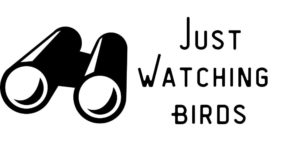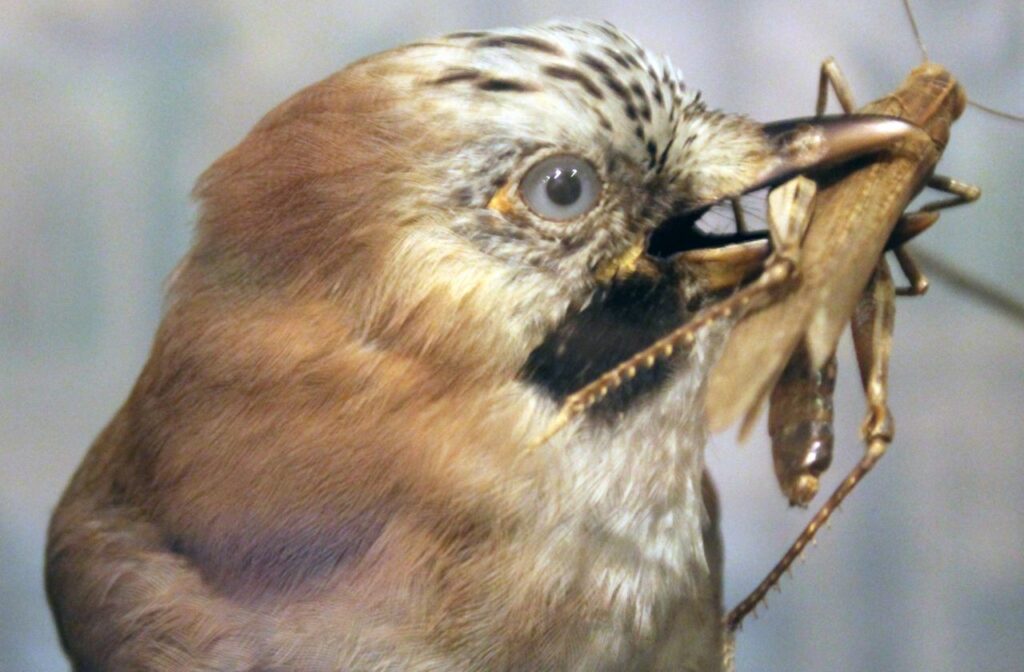As an Amazon Associate, we earn from qualifying purchases with no additional costs for you.
Birds are fascinating animals that have adapted to a range of habitats and food types. However, you may wonder just how often wild birds eat.
When and how often a wild bird eats varies based on body size and weather conditions. Very small birds with fast metabolic rates eat every 15 minutes; big birds like eagles need to take in about 10% of their body weight each day and don’t need to hunt continuously.
Read more to learn about how and when wild birds eat and the types of foods birds eat. We also discuss if it is a good idea to feed wild birds and what types of food can be put out to attract birds.
TIP: If you want to check out the best pair of binoculars for bird watching, we recommend a pair of waterproof and fog-proof 8 x 42 binoculars like the Celestron – Outland X 8×42 Binoculars (Amazon link).
When And How Often Do Wild Birds Eat?
Birds that are active during the day show the most feeding activity at sunrise and sunset. At sunrise, birds are hungry, having just awoken from sleep. They are seen very actively foraging for their food as the sun comes up. This is also why bird watching is most successful very early in the morning.
Another good time to see birds is late in the day before sunset when birds eat their last meal before going to roost.
Although sunrise and sunset are when birds are most actively seen eating, they do not eat only twice a day. In fact, birds eat throughout the day as they use a lot of energy flying and moving around.
They are also warm-blooded or endothermic animals. Since birds are endothermic animals, it means they control their body temperature internally through metabolic processes. Consuming enough food is, thus, important also in allowing the birds to keep their body temperature high enough.
Frequency Of Bird Feeding
How often birds eat depends also on their size and stage of development. Baby birds need to eat very often. For instance, a small nestling of a Cape White-eye or Speckled Mousebird needs to be fed every 30 minutes.
Hummingbirds are the smallest of the birds. Adult hummingbirds have rapid metabolic rates, meaning they need to consume food very frequently. Hummingbirds feed on nectar every 10 to 15 minutes in the wild.
Watch this video of a hummingbird feeding on flowers:
The temperature of the environment impacts feeding as well. In colder temperatures, birds need to expend more energy keeping warm and they will tend to eat more as a result.
Many bird species choose to migrate when temperatures start to drop. This allows the birds to fly to warmer areas where food is more abundant and conditions less extreme.
This means the birds can find enough food to survive by overwintering elsewhere. When conditions improve, the birds will migrate back in the spring and summer to their usual feeding grounds.
Types Of Birds That Migrate In North America
Most of the songbirds of North America are neotropical migrants, which fly south into Central America and South America, where they spend the winter.
The birds then fly back north when spring arrives in North America. You can expect to see many vireos, warblers, tanagers, and orioles as they start migrating back in Spring.
Watch this interesting video on migratory birds:
Hummingbirds also tend to migrate south, although the use of artificial feeders may cause some birds to stay a bit longer in places like Arizona. Different species of birds follow different diets, which may influence where exactly they migrate to or if they migrate at all.
The Baltimore Oriole is a good example of a migratory bird. Have a look at this video to discover what the bird looks like and to see how small it is!
Diet Switching In Winter
Instead of migrating, some species may simply switch to other types of food when conditions worsen in winter. This happens with species that feed on invertebrates, such as insects and worms.
In very cold conditions, these prey items are scarce; insects are ectothermic and require warm temperatures to be active, so birds may have difficulty finding enough of these food items in winter.
Because of this, birds that would usually feed on invertebrates and insects switch to feeding on other foods like berries and other fruits in winter.
For instance, Mockingbirds and Thrashers can be seen feasting on berries during Fall and Winter. This helps these birds to survive the cold conditions and lack of available prey items during the cold Winter.
Wild Bird Diets
There is a range of food types that birds will eat. Depending on the species, birds may eat meat, fish, plants, seeds, fruits, nuts, nectar, insects, and invertebrates. Below are the food preferences and examples of birds that feed on each food type.
- Meat: Meat eaters include the birds of prey. Examples include the diurnal birds of prey, such as hawks, eagles, falcons, and buzzards. Nocturnal meat eaters are the owls, which feed mostly on rodents.
- Fish: Fish-eaters include osprey, fish eagles, penguins and other birds like cormorants, herons, and kingfishers.
- Plants: Plant eaters feed on vegetation. This can comprise most of the diet in some species. Swans are an example of a bird that eats a lot of aquatic vegetation.
- Seeds: Seeds of grasses and other plants are eaten by many birds. Some species are well-adapted to eating seeds. These birds include the parrots, finches, weavers, and canaries.
- Nuts: To eat nuts, a bird has to have a strong beak. Birds in the parrot family eat nuts, but so do woodpeckers like the Acorn Woodpecker, which stores thousands of nuts so they have enough food when conditions change.
- Nectar: Many birds eat nectar given the chance, but there are species that mainly feed on nectar. The types of birds that are specialized as nectar feeders include the hummingbirds, sunbirds, and sugarbirds. These birds have long beaks and tongues to easily extract nectar from flowers.
- Fruits: Fruit-eating birds include birds like the turacos and mousebirds of Africa. Many birds eat fruit in winter when insects are less available. Fruits like berries are a good food source for mockingbirds and robins in winter when insects are scarce.
- Insects and invertebrates: Many insect-eaters also eat invertebrates, such as spiders and worms. Birds such as warblers glean insects and spiders from tree branches and leaves. Robins, thrushes, sparrows, catbirds, and mockingbirds can be seen looking under leaf litter for invertebrates. There are some warblers that also forage on the ground, for instance, the ovenbird.
Should You Feed Wild Birds?
There is debate about whether you should feed wild birds or not. If you do decide to feed wild birds, you need to ensure that feeders are kept clean and that the food you provide is appropriate.
Do not feed birds bread, and milk, and other human-type foods that birds would not eat naturally in the wild. Milk and bread are also not digestible by most birds, and can result in birds having nutritional deficiencies.
If you live in an urban or suburban area, you can place fruits and seeds in feeders. It is advisable to do this mostly during the cold months when birds need help finding food. Do not place feeders too close to windows because you risk having the birds fly into the windows and hurt themselves.
TOP TIP: Discover what wild birds eat during the winter months, and if you should feed them in this article. If you have ever wondered why birds fly in flocks, read this article to find out! The answer might surprise you!
The Disadvantages Of Bird Feeders
It is important to realize that feeders and bird baths can serve as a place to spread disease. This is because you are attracting a group of birds to one spot. Be aware of any notifications regarding diseases spreading through the bird population.
Pay attention to media announcements regarding diseases in the wild bird populations. If there is a rapidly spreading disease, then It may be best to take down feeders to reduce the transmission of such illnesses in the bird population.
You can also have a bird bath in the garden, but similar to the feeders, this needs to be kept clean. Sick birds can easily spread disease by drinking from a bird bath or eating at a feeder, which is why it is so critical that you clean all these regularly.
TIP: Choosing the right bird feeder is crucial when you want to attract birds on your backyard. There are a lot of options on how and where to place a bird feeder. Check out my picks on different bird feeders below (Amazon links):
– Free-standing Bird Feeder
– Hanging Bird Feeder
– Bird Feeder with Camera
Wild Bird Gardening To Provide Food
It is better to rather plant trees that provide fruits like berries, and to let some wild grasses grow and seed in an area of the garden. Also, plants that many people consider to be weeds are often used by birds.
If possible, you can leave some of these in part of your garden for the birds to use. Birds like Goldfinches will feed on seeding grasses and the seeds of weeds.
You can attract hummingbirds by planting Salvia and other nectar-producing plants that the birds will naturally feed from.
You should also leave leaf litter on the ground under plants and trees, as this provides a habitat for small invertebrates, which blackbirds, thrushes, sparrows, and mockingbirds feed on.
In this video a blackbird scratches through leaf litter looking for food.
Conclusion
Birds that are active during the day will feed more first thing at sunrise and then again at sunset. They will eat throughout the day but will forage the most after waking up and then before roosting. How often a bird eats also varies depending on the size of the bird and the temperature.
Smaller birds need to eat more often than larger birds. Birds will consume more food when it is cold than when it is hot since they are endothermic animals.
TIP: Check out my recommended products if you are looking for the best and trusted equipment for birdwatching in the wild or on your backyard (Amazon link):

